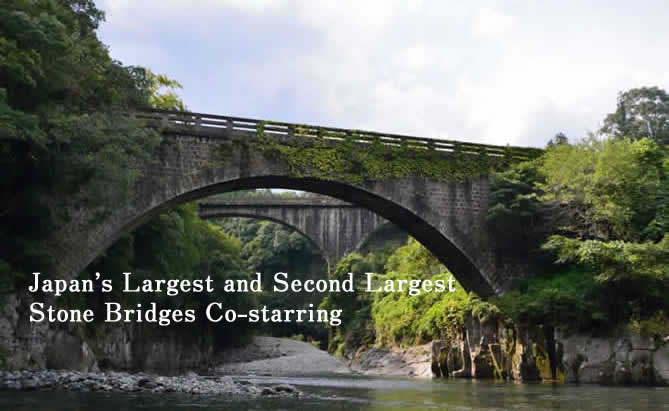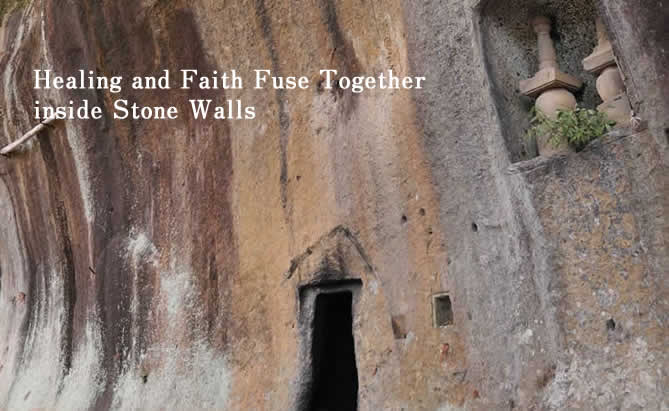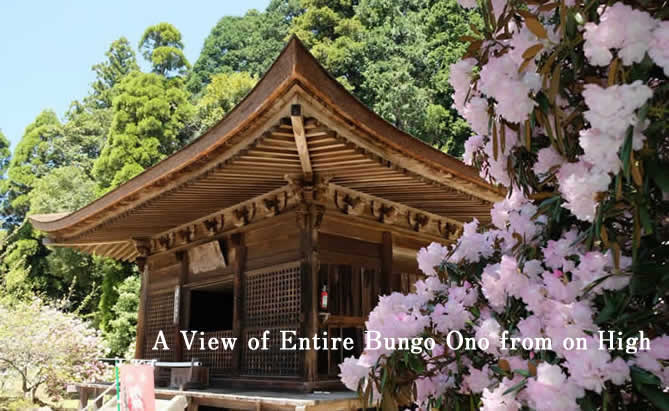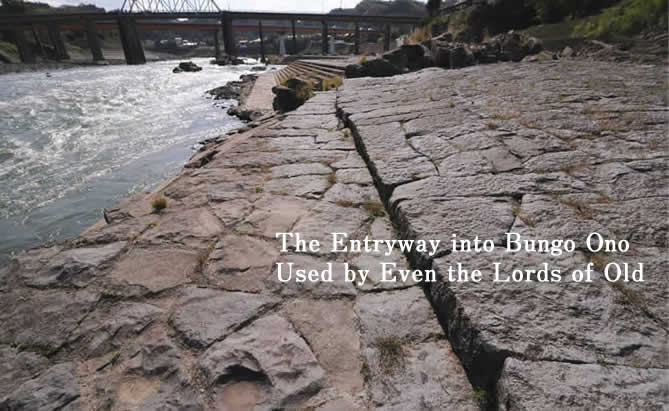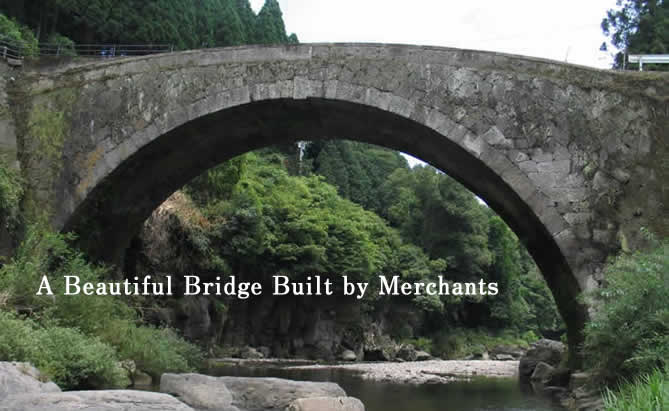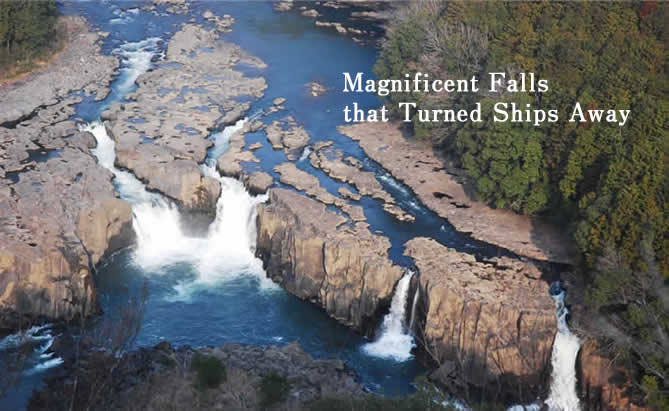The history of life returned with all the colors of the palette after a huge, destructive pyroclastic flow 90,000 years ago.
Collaboration between Humankind and Nature
The people of Bungo Ono made use of the vast supply of ignimbrite made available by the Aso volcano to build bridges to cross the deep valleys carved into pyroclast plains and utilize the waterways as transportation routes and ports to support their livelihoods. A diverse culture was born of the natural geography of the area.
Open the Side Menu to select a site.
Deai and Todoro Bridges (D-1)
Todoro Bridge is a double arch stone bridge built in 1934 as part of a forest railway. The larger of its arches spans 32.1 meters, the largest in all of Japan. Deai Bridge was built a decade earlier in 1924, and its 29.3 meters arch is the second largest in the country. Along the both shores of the Okudake River, which runs below the bridges, stand majestic columnar joints of ignimbrite formed nearly 90 thousand years ago by pyroclastic flows from the Aso volcano.
Stone Bath at Tsujigawara (D-2)
This stone bath is a kind of sauna filling a stone cave with steam. It makes excellent use of the shape of the rock walls of ignimbrite created around 120,000 years ago by pyroclastic flows from the Aso volcano's third eruption. Sanskrit characters for Buddha Amida are carved into the rock wall, offering proof that the location was once used in Buddhist practices.
Jinkakuji Temple(D-3)
Jinkakuji Temple has a history of over 1,000 years. It stands atop a ridge of columnar joints of ignimbrite formed by pyroclastic flows around 15,000,000 years ago. As its location offers a great view of the area, it often served as a militant stronghold throughout history. The temple grounds are home to rhododendrons, which attract quite a few visitors while they are in bloom.
Inukai Port Ruins(D-4)
Inukai Port was a riverside port built in the early Edo period. At the time, the Oka Domain held the territory upstream on the Ono River, while the Usuki Domain controlled the area around Miemachi downstream, so travel was carried out on land until here at Inukai, where travelers then went aboard to head for Oita. The riverbed was made up of rugged rocks from a hard stratum, so cut ignimbrite stone was laid to make it into a flat surface.
Kokan Bridge(D-5)
The name of this bridge comes from how it appears like a rainbow arching over the valley. It was completed in 1824, during the late Edo period. At the time it was the largest stone bridge in Japan, built by joint funding of local merchants who sought a solution to overcome the difficult route from Miemachi in the Usuki Domain to the town around Usuki Castle. This sturdy, beautiful work of architecture is designated as an Important Cultural Property of Japan.
Komori Falls (D-6)
Part of the main course of the Ono River, these falls stand 10 meters high. Its name is believed to have come from its shape, which locals say look like a bat with spread wings. During the Meiji era, a detour waterway with a slope to raise and lower ships was constructed in order to use this river for transportation.





